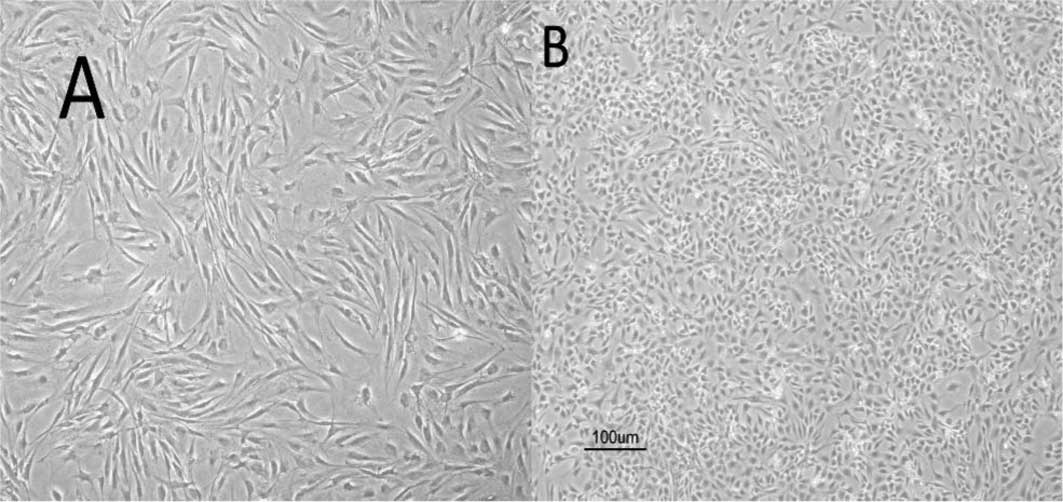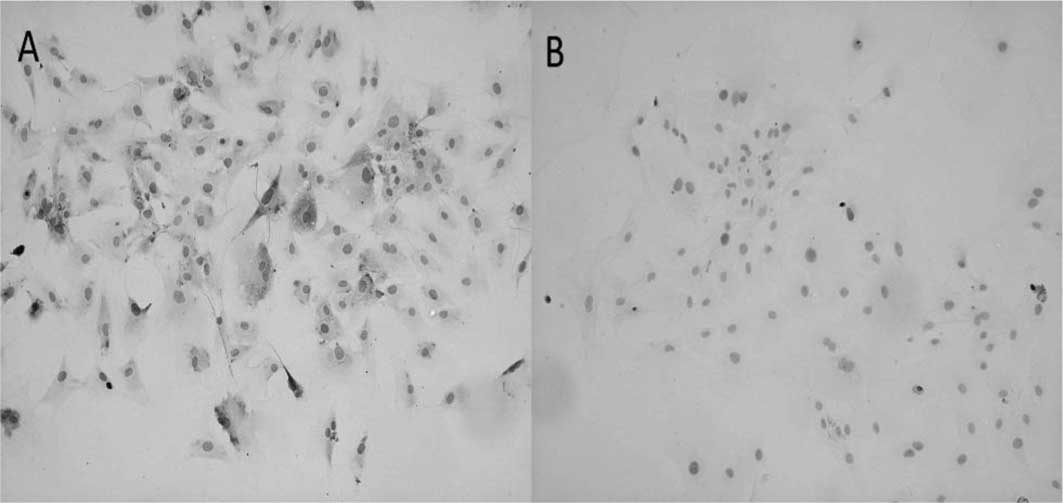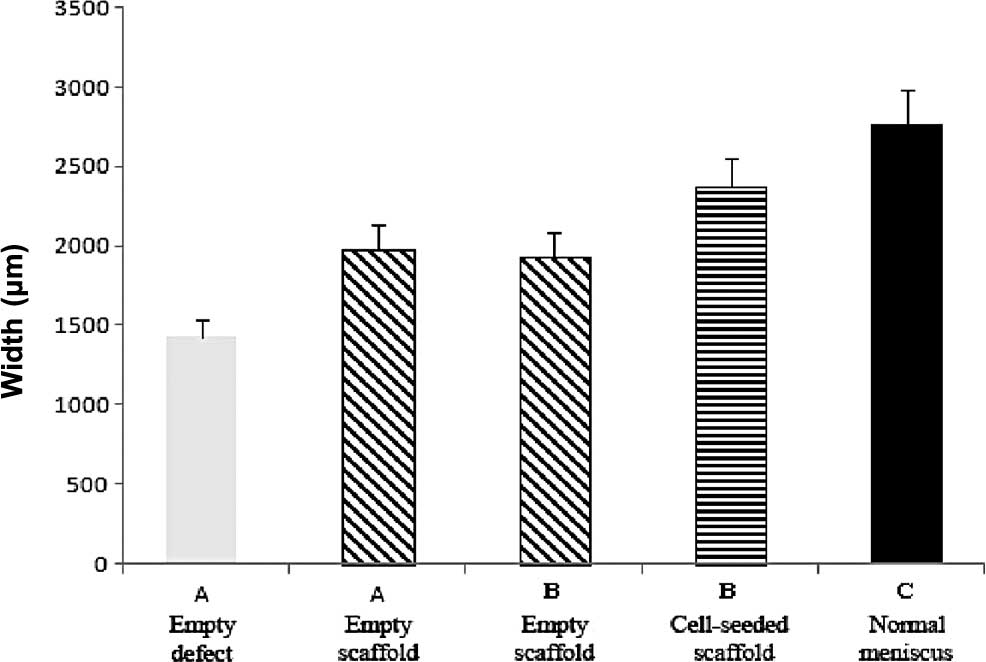|
1.
|
AS VoloshinJ WoskShock absorption of
meniscectomized and painful knees: a comparative in vivo studyJ
Biomed Eng5157161198310.1016/0141-5425(83)90036-56687914
|
|
2.
|
AM AhmedDL BurkeA YuIn-vitro measurement
of static pressure distribution in synovial joints-part II:
retropatellar surfaceJ Biomech
Eng105226236198310.1115/1.31384106632824
|
|
3.
|
R HartM JanecekV SiskaB KuceraV
StipcákCorrelation of long-term clinical and radiological results
after meniscectomiesActa Chir Orthop Traumatol
Cech72304307200516316606
|
|
4.
|
RJ Van der WalBJ ThomassenER van
ArkelLong-term clinical outcome of open meniscal allograft
transplantationAm J Sports Med3721342139200919542303
|
|
5.
|
T YamasakiM DeieR ShinomiyaY YasunagaS
YanadaM OchiTransplantation of meniscus regenerated by tissue
engineering with a scaffold derived from a rat meniscus and
mesenchymal stromal cells derived from rat bone marrowArtif
Organs32519524200810.1111/j.1525-1594.2008.00580.x
|
|
6.
|
RJ WebberJL YorkJL VanderschildenAJ Hough
JrAn organ culture model for assaying wound repair of the
fibrocartilaginous knee joint meniscusAm J Sports
Med17393400198910.1177/0363546589017003142729490
|
|
7.
|
BM BakerAS NathanGR HuffmanRL MauckTissue
engineering with meniscus cells derived from surgical
debrisOsteoarthritis
Cartilage17336345200910.1016/j.joca.2008.08.00118848784
|
|
8.
|
SW KangSM SonJS LeeES LeeKY LeeSG ParkJH
ParkBS KimRegeneration of whole meniscus using meniscal cells and
polymer scaffolds in a rabbit total meniscectomy modelJ Biomed
Mater Res A78659671200610.1002/jbm.a.30579
|
|
9.
|
K IshidaR KurodaM MiwaY TabataA HokugoT
KawamotoK SasakiM DoitaM KurosakaThe regenerative effects of
platelet-rich plasma on meniscal cells in vitro and its in vivo
application with biodegradable gelatin hydrogelTissue
Eng1311031112200710.1089/ten.2006.019317348798
|
|
10.
|
GM PerettiTJ GillJW XuMA RandolphKR
MorseDJ ZaleskeCell-based therapy for meniscal repair: a large
animal studyAm J Sports
Med32146158200410.1177/009539970325879014754738
|
|
11.
|
SH LuAH YangCF WeiHS ChiangMB
ChancellorMulti-potent differentiation of human purified
muscle-derived cells: potential for tissue regenerationBJU
Int10511741180200919712114
|
|
12.
|
G ZhouW LiuL CuiX WangT LiuY CaoRepair of
porcine articular osteochondral defects in non-weight-bearing areas
with autologous bone marrow stromal cellsTissue
Eng1232093221200610.1089/ten.2006.12.320917518635
|
|
13.
|
W ZhuY WangG QiuB ChenCharacterization of
the purification and primary culture of adult canine myoblasts in
vitroMol Med Rep3463468201021472263
|
|
14.
|
A AsakuraM KomakiM RudnickiMuscle
satellite cells are multipotential stem cells that exhibit
myogenic, osteogenic and adipogenic
differentiationDifferentiation68245253200110.1046/j.1432-0436.2001.680412.x11776477
|
|
15.
|
T MatsushitaN MatsuiH FujiokaS KuboR
KurodaM KurosakaS YoshiyaExpression of transcription factor sox9 in
rat L6 myoblastic cellsConnect Tissue
Res45164173200410.1080/0300820049051413015512770
|
|
16.
|
K GoldringT PartridgeD WattMuscle stem
cellsJ Pathol197457467200210.1002/path.115712115862
|
|
17.
|
CS DayC KasemkijwattanaJ MenetreySS Floyd
JrD BoothMS MorelandFH FuJ HuardMyoblast-mediated gene transfer to
the jointJ Orthop Res15894903199710.1002/jor.11001506169497816
|
|
18.
|
M KoningMC HarmsenMJ van LuynPM
WerkerCurrent opportunities and challenges in skeletal muscle
tissue engineeringJ Tissue Eng Regen
Med3407415200910.1002/term.19019575392
|
|
19.
|
D SinghV NayakA KumarProliferation of
myoblast skeletal cells on three-dimensional supermacroporous
cryogelsInt J Biol Sci6371381201010.7150/ijbs.6.37120617130
|
|
20.
|
A MarsanoSJ Millward-SadlerDM SalterA
AdesidaT HardinghamE TognanaE KonC Chiari-GrisarS NehrerM JakobI
MartinDifferential cartilaginous tissue formation by human synovial
membrane, fat pad, meniscus cells and articular
chondrocytesOsteoarthritis
Cartilage154858200710.1016/j.joca.2006.06.009
|
|
21.
|
SH LuAH YangCF WeiHS ChiangMB
ChancellorMulti-potent differentiation of human purified
muscle-derived cells: potential for tissue regenerationBJU
Int10511741180200919712114
|
|
22.
|
J Stern-StraeterG BranF RiedelA SauterK
HörmannUR GoesslerCharacterization of human myoblast cultures for
tissue engineeringInt J Mol Med2149562008
|
|
23.
|
JM MoranD PazzanoLJ
BonassarCharacterization of polylactic acid-poly-glycolic acid
composites for cartilage tissue engineeringTissue
Eng96370200310.1089/10763270376268754612625955
|
|
24.
|
L CuiY WuL CenH ZhouS YinG LiuW LiuY
CaoRepair of articular cartilage defect in non-weight-bearing areas
using adipose-derived stem cell-loaded polyglycolic acid
meshBiomaterials3026832693200910.1016/j.biomaterials.2009.01.04519217157
|
|
25.
|
J ZwingmannAT MehlhornN SudkampB StarkM
DaunerH SchmalChondrogenic differentiation of human articular
chondrocytes differs in biodegradable PGA/PLA scaffoldsTissue
Eng1323352343200710.1089/ten.2006.039317691868
|


















